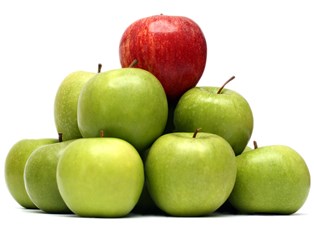The food pyramid was introduced by the United States Department of Agriculture in 1992 as a way to help citizens make healthy food decisions. It received a significant makeover in 2005 and was rebranded as MyPyramid, but in 2011 it was completely done away with and replaced by MyPlate. While there’s no doubt a “family resemblance” between these two systems, MyPlate has attempted to address drawbacks in the original pyramid concept. Here’s a look at how these two tools approach healthy eating from different angles.
The Layout
When MyPlate was introduced, the USDA completely did away with the classic pyramid layout. Many people had complained that the original shape was too abstract and made it difficult for users to accurately determine how much of each food group they should be consuming. MyPlate is shaped like a common dinner plate to help users more easily approximate portion sizes for each of the food groups.
Fats and Oils
On the traditional food pyramid, fats and oils were placed at the very top, and users were cautioned to eat them only sparingly. When MyPlate was introduced, fats and oils were completely eliminated from the equation. Many people see this as a drawback to the new system, as most American diets are too high in these substances to begin with. However, when visiting the MyPlate website, users can find detailed information about limiting fat intake and choosing healthy varieties.
Serving Sizes
In addition to fats and oils, MyPlate also did away with the serving recommendations that were part of the original food pyramid. This was seen as an improvement by some, since the pyramid gave no indication of how large a serving should actually be. With the MyPlate method, users have a visual approximation of how much of each food group they should be eating.
Healthy Eating Tips
The original food pyramid was used as a standalone infographic; however, MyPlate is accompanied by a short list of suggestions for making healthy food choices. These include things such as choosing whole grains over refined, replacing sugary drinks with water, and choosing low-sodium options. This is often seen as a major benefit of the new system, since these concepts are important but difficult to convey visually.



